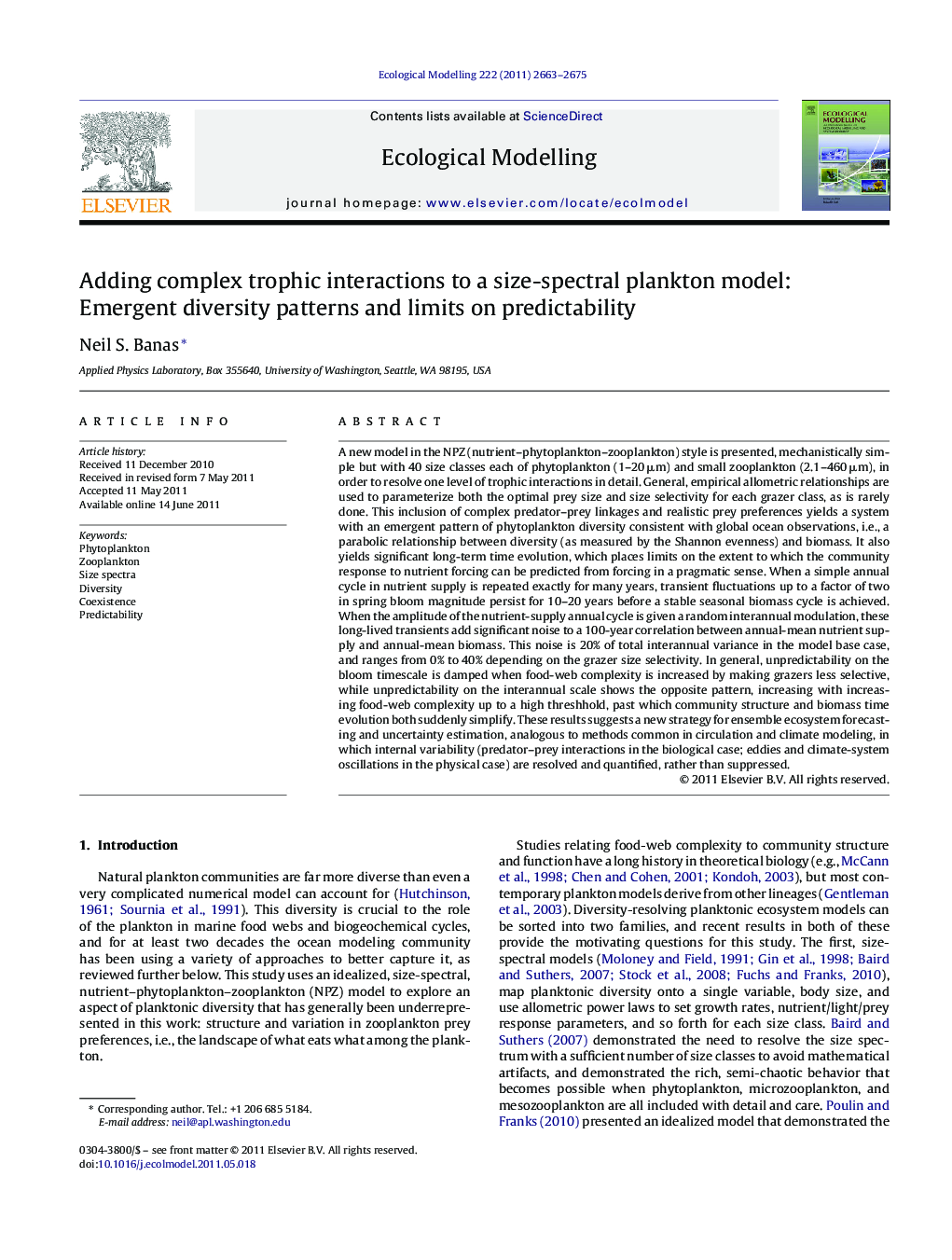| کد مقاله | کد نشریه | سال انتشار | مقاله انگلیسی | نسخه تمام متن |
|---|---|---|---|---|
| 4376785 | 1303394 | 2011 | 13 صفحه PDF | دانلود رایگان |

A new model in the NPZ (nutrient–phytoplankton–zooplankton) style is presented, mechanistically simple but with 40 size classes each of phytoplankton (1–20 μm) and small zooplankton (2.1–460 μm), in order to resolve one level of trophic interactions in detail. General, empirical allometric relationships are used to parameterize both the optimal prey size and size selectivity for each grazer class, as is rarely done. This inclusion of complex predator–prey linkages and realistic prey preferences yields a system with an emergent pattern of phytoplankton diversity consistent with global ocean observations, i.e., a parabolic relationship between diversity (as measured by the Shannon evenness) and biomass. It also yields significant long-term time evolution, which places limits on the extent to which the community response to nutrient forcing can be predicted from forcing in a pragmatic sense. When a simple annual cycle in nutrient supply is repeated exactly for many years, transient fluctuations up to a factor of two in spring bloom magnitude persist for 10–20 years before a stable seasonal biomass cycle is achieved. When the amplitude of the nutrient-supply annual cycle is given a random interannual modulation, these long-lived transients add significant noise to a 100-year correlation between annual-mean nutrient supply and annual-mean biomass. This noise is 20% of total interannual variance in the model base case, and ranges from 0% to 40% depending on the grazer size selectivity. In general, unpredictability on the bloom timescale is damped when food-web complexity is increased by making grazers less selective, while unpredictability on the interannual scale shows the opposite pattern, increasing with increasing food-web complexity up to a high threshhold, past which community structure and biomass time evolution both suddenly simplify. These results suggests a new strategy for ensemble ecosystem forecasting and uncertainty estimation, analogous to methods common in circulation and climate modeling, in which internal variability (predator–prey interactions in the biological case; eddies and climate-system oscillations in the physical case) are resolved and quantified, rather than suppressed.
► Empirical reviews of zooplankton prey preferences were added to a new plankton model.
► A parabolic diversity–biomass relationship emerges, as seen in marine observations.
► The ecosystem's response to nutrient supply is only partially predictable.
► Grazer selectivity has a strong effect on the level of predictability.
► Predictability at few-day and interannual timescales do not vary in concert.
Journal: Ecological Modelling - Volume 222, Issue 15, 10 August 2011, Pages 2663–2675